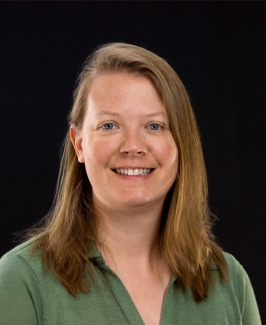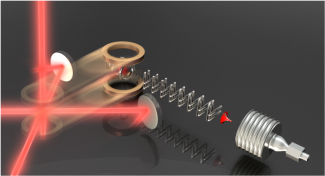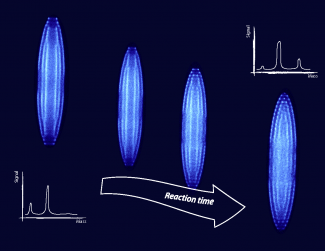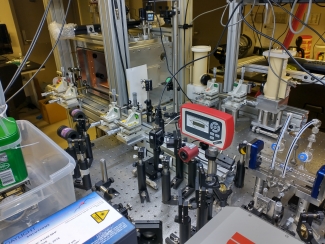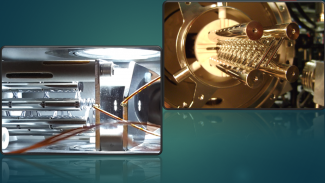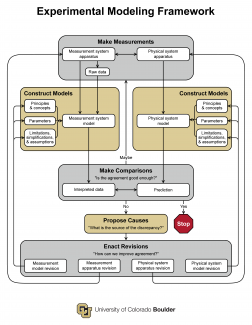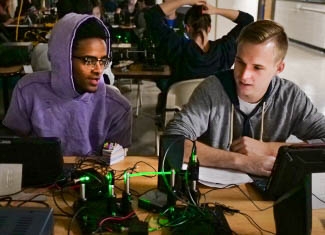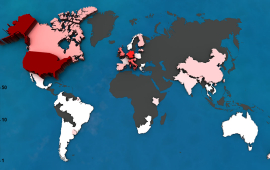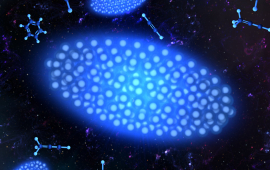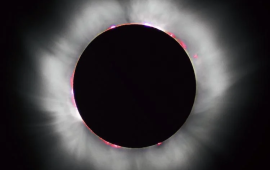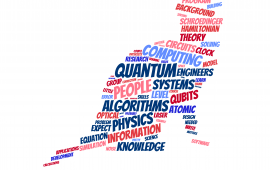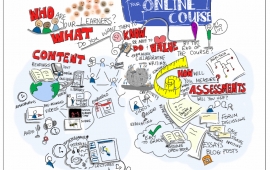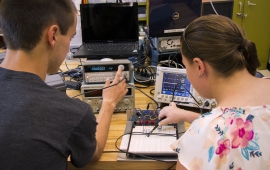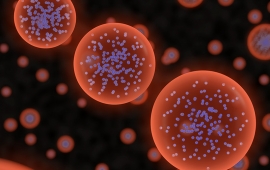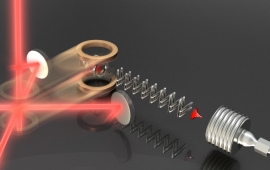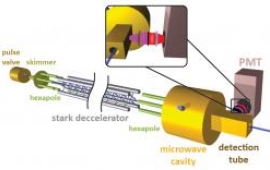Our lab studies elastic and inelastic collisions between atoms and molecules in the cold temperature regime to understand how the collision energy and quantum states impact the interactions.
About the Lewandowski Group
Our group works in two distinct, but complementary, areas of science, experimental cold molecular physics and physics education research. Both of these areas are inherently interdisciplinary in nature, where we bridge traditional boundaries of physics, chemistry, and social science. For the first area, we cool and trap neutral and ionic molecules to explore how controlling the internal quantum states and translational motion can impact how they interact and react. We also take advantage of cooling molecules to be able to perform high-resolution spectroscopy to elucidate complex molecular structure. The second area of research focuses on developing understanding of how students learn experimental physics. We apply the new knowledge to improve undergraduate and graduate education in experimental and laboratory physics.
Our lab directly laser cools trapped calcium ions (Ca+) down to milikelvin temperatures for the purpose of studying gas-phase cold chemical reactions.
Our lab uses a Cryogenic Buffer-Gas Beam (CBGB) and a mid-infrared (mid-IR) spectroscopy setup for the purpose of studying the vibrational spectra of cold, gas-phase molecular clusters.
Our research uses supersonic expansion coupled with Stark deceleration to cool and slow polar molecules.
Physics Education Research
The Lewandowski Group studies how students obtain experimental research skills in the context of instructional labs and undergraduate research experiences. In addition, we work to transform classroom experiences to help students better transition into the research lab environment.
Looking for ways to evaluate or transform your physics lab course? We have developed multiple assessment tools including E-CLASS, MAPLE, and SPRUCE to help evaluate undergraduate physics lab courses. In addition, we have worked to transform multiple classroom experiences from a large, introductory level course to a junior level lab that focuses on modeling to a…
Stories About Our Research
Research Highlights
JILA Address
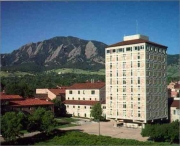 We are located at JILA: A joint institute of NIST and the University of Colorado Boulder.
We are located at JILA: A joint institute of NIST and the University of Colorado Boulder.
Map | JILA Phone: 303-492-7789 | Address: 440 UCB, Boulder, CO 80309





